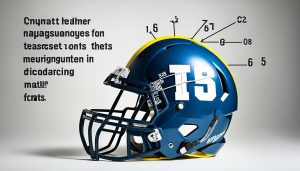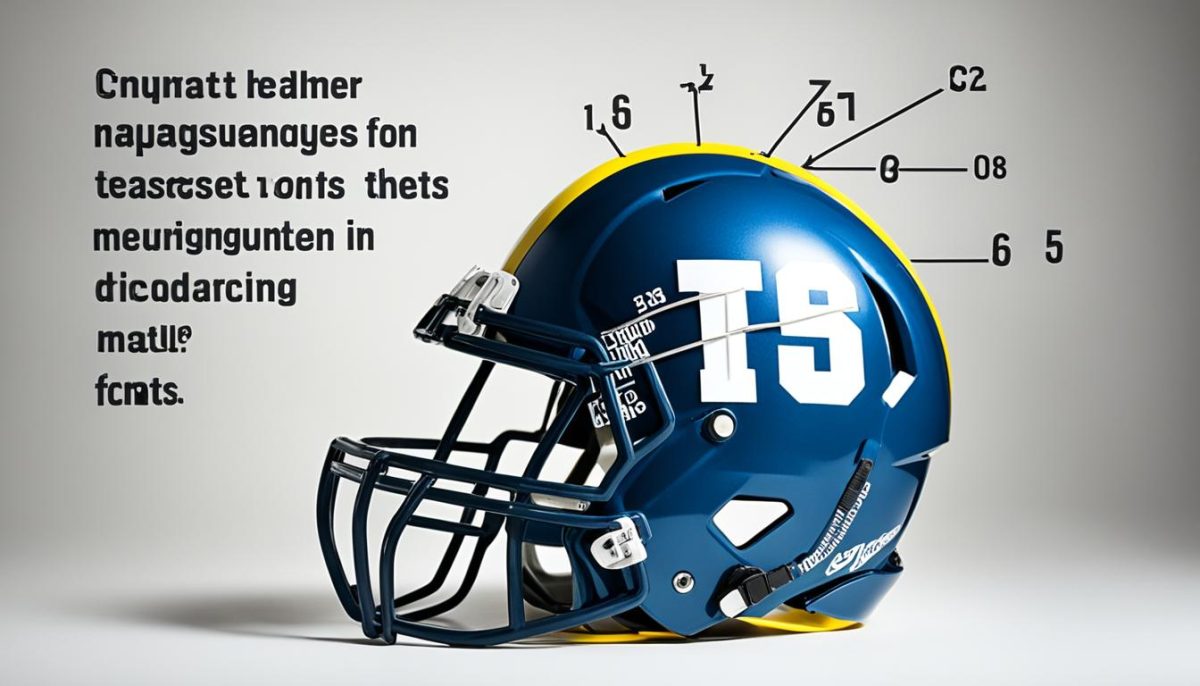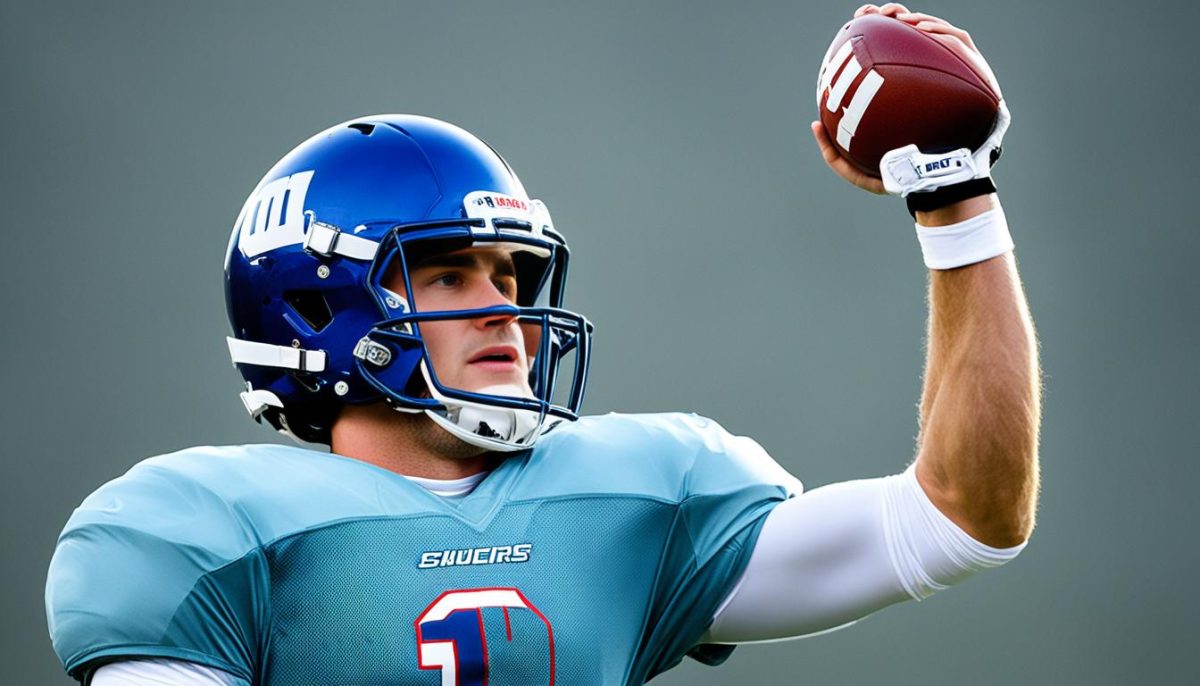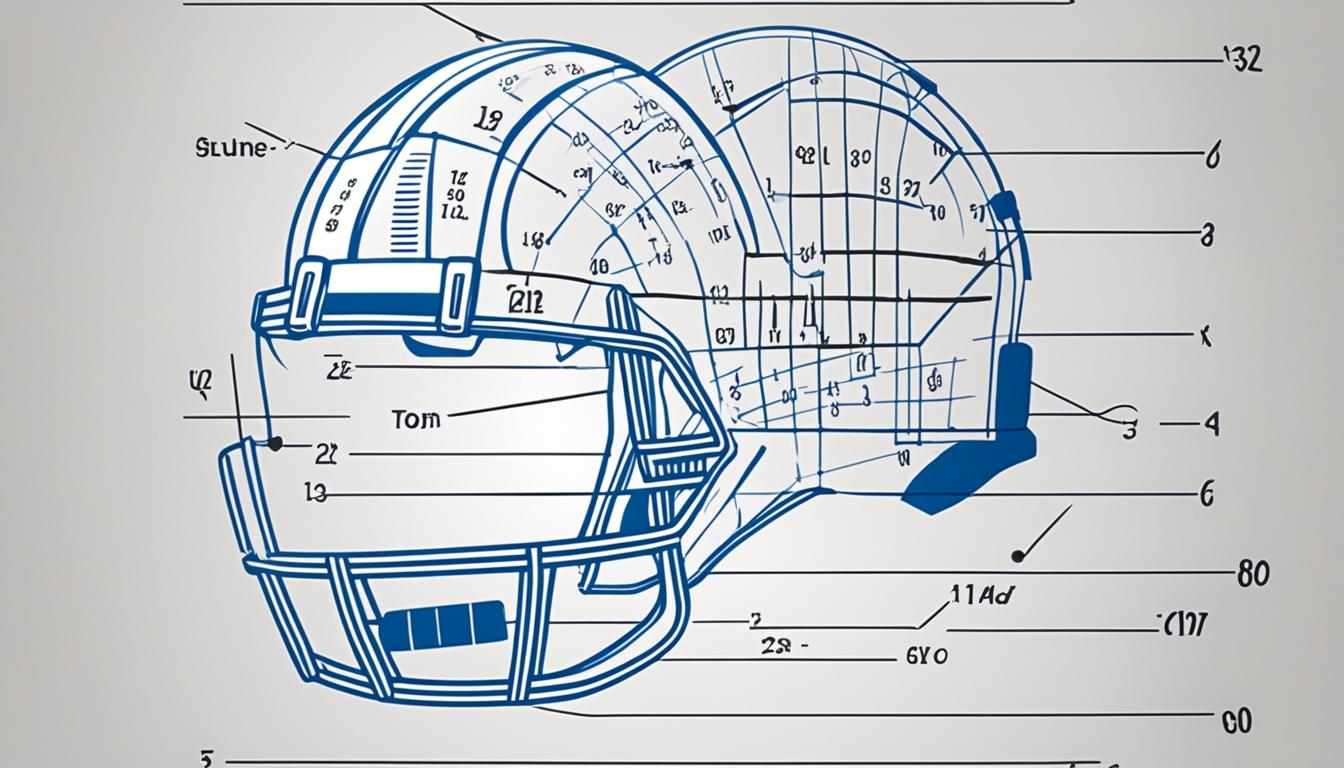When it comes to protecting athletes on the football field, there’s one piece of equipment that is absolutely crucial – the football helmet. A properly fitted helmet not only enhances safety but also ensures comfort and optimal performance. But, how do you know if you have the right helmet size for your head?
It’s time to put your beliefs to the test and ask yourself – do you really know how to measure your helmet size accurately? Many players and coaches rely on outdated methods or guesswork, leading to ill-fitting helmets and potential injuries. Let us guide you through the process of finding the perfect fit with our comprehensive football helmet size chart and helmet sizing guide.
Key Takeaways:
- Choosing the right helmet size is crucial for protection and performance on the field.
- Follow our 7 simple steps to ensure a perfect helmet fit.
- Consider factors like head circumference, head shape, and manufacturer recommendations when selecting a helmet size.
- Make sure to regularly inspect your helmet for any damages or wear and tear.
- Consult a healthcare professional for any serious injuries that do not respond to basic first aid.
When to Upgrade to an Adult Helmet
When it comes to football helmets, knowing when to upgrade from a youth helmet to an adult helmet is an important decision for players and their parents. While there is no definitive age barrier between the two, there are several factors to consider. Let’s take a closer look.

“There is no definitive age barrier between youth and adult football helmets.”
In general, players should consider upgrading to an adult-level helmet in middle school or between the ages of 12 and 14. At this stage, young players are typically transitioning into more competitive leagues and may require better protection.
Youth football helmets are typically made with ABS plastic, while adult helmets are constructed with a stronger and lighter-weight material called polycarbonate. The use of polycarbonate helmets is often required in high school leagues due to their superior safety features.
“Youth leagues may prohibit the use of adult helmets due to safety concerns, while high school leagues typically require the use of polycarbonate helmets for increased protection.”
It’s essential to consider various factors when deciding to upgrade, including age, league requirements, skill level, individual needs, and budget. Prioritizing safety and comfort is key to ensuring the best helmet choice for the player.
| Factors to Consider | Youth Helmet | Adult Helmet |
|---|---|---|
| Safety Standards | Meets minimum safety requirements for youth leagues | Meets stricter safety standards, often required for high school leagues |
| Material | ABS Plastic | Polycarbonate |
| Weight | Lightweight | Strong and lightweight |
| Protection | Adequate for most youth players | Enhanced protection for more competitive play |
| Budget | Usually more affordable | Varies depending on brand and features |
How to Measure Helmet Size
Accurately measuring your helmet size is crucial to ensure a proper fit and maximum protection. Follow these steps to measure your head circumference and determine the right helmet size:
-
Create an Optimal Measuring Situation
Find a quiet and well-lit area where you can comfortably measure your head.
-
Measure Head Circumference
Using a flexible measuring tape, wrap it around your head, just above the eyebrows.
Pro Tip: Ask a friend or family member to assist you to ensure accurate measurements.
-
Record the Largest Measurement
Take multiple measurements and record the largest one as your head circumference measurement.
-
Consult the Helmet Size Chart
Refer to the football helmet size chart provided by the manufacturer to determine the appropriate helmet size for your head circumference.
Pro Tip: Different helmet types and shapes may have specific sizing considerations, so take that into account when selecting a helmet size.
| Head Circumference (in inches) | Helmet Size |
|---|---|
| 20 – 21 | Small |
| 21 – 22 | Medium |
| 22 – 23 | Large |
| 23 – 24 | X-Large |
By following these measurement guidelines and referring to the helmet size chart, you can ensure a proper fit and optimum protection for your football helmet.

Safety should always be a top priority, and a well-fitted helmet plays a vital role in protecting your head from potential injuries on the field.
How to Ensure a Correct Helmet Fit
A snug and properly fitted football helmet is essential for optimal protection on the field. Follow these steps to ensure your helmet fits securely and comfortably:
- Adjust the chin strap: The chin strap should be snug enough to keep the helmet in place, but not so tight that it restricts your breathing, swallowing, or speaking.
- Eliminate any gaps: Check for any space between your temples and the inner helmet liner or padding. Additionally, ensure there is no gap between your jaw and the jaw pads. These areas should fit snugly against your head and face.
- Consider additional padding: If needed, you can use additional padding or adjust the existing padding and inner headband for a more secure and comfortable fit. Make sure the helmet feels snug without causing any discomfort.
- No movement: When you rotate or move your head, the helmet should not shift or move. It should remain securely in place, providing maximum protection during play.
- Proper positioning: The helmet should sit at the proper spot on your forehead, just above your eyebrows. It should provide you with a clear and unobstructed view of the field.
Ensuring a correct helmet fit is crucial for both your safety and performance on the football field. Take the time to adjust and fine-tune the fit of your helmet for optimal protection during every game and practice.

Helmet Features to Consider
When choosing a football helmet, it’s important to consider various features and technologies that can enhance safety, comfort, and performance on the field. Here are some key aspects to keep in mind:
1. TPU Cushioning
One feature to look for is TPU (Thermoplastic Urethane) cushioning. This material provides enhanced impact protection and durability, absorbing and dispersing energy from collisions.
2. Helmet Stabilization System
A secure and snug fit is crucial for a helmet to effectively protect your head. Look for helmets that offer a helmet stabilization system, such as an adjustable chinstrap and a secure fastening mechanism, to ensure the helmet stays in place during intense gameplay.
3. Shell Material, Padding, and Liner
The shell of the helmet should be made of high-quality, impact-resistant materials, such as polycarbonate or ABS plastic, to provide maximum protection. The padding and liner inside the helmet should be well-cushioned, moisture-wicking, and easily removable for cleaning and maintenance.
4. Weight
The weight of the helmet can have an impact on both performance and neck strain. Consider helmets that are designed to be lightweight without compromising safety and protection. Opting for a lighter helmet can provide better maneuverability and comfort during long periods of wear.
5. Helmet Materials
Leading helmet manufacturers utilize advanced materials to enhance protection. Look for brands that invest in innovative technologies, such as composite shells, foam padding, and impact-absorbing liners, to provide superior safety on the field.
6. Ventilation
Proper ventilation is essential to keep players cool and comfortable during intense gameplay. Look for helmets with strategically placed vents that allow air circulation while maintaining structural integrity.
7. Facemask Options
A helmet’s facemask is an important component for both protection and visibility. Consider helmets that offer a variety of facemask options, allowing you to choose the style that suits your position and personal preference.
By considering these helmet features, you can find a helmet that provides optimal safety, comfort, and performance for your football needs.
Conclusion
Fitting a football helmet correctly is crucial for protecting the head and preventing injuries. By following the 7 steps outlined in the football helmet size chart guide, you can ensure a perfect fit. Taking into consideration factors such as age, league requirements, and budget, you can select the right helmet for your needs.
It’s important to ensure that the helmet fits snugly and comfortably, with no gaps between your head and the padding. Regularly check the helmet for any signs of damage or wear and tear to maintain its effectiveness. Remember, a proper helmet fit is not only crucial for optimal protection but also for performance on the field.
Investing time in properly fitting your football helmet is an investment in your safety as a player. So, take the necessary steps to guarantee that your helmet fits correctly and provides the protection you need to excel in the game.
FAQ
How do I use the football helmet size chart to find the right size?
To use the football helmet size chart, measure your head circumference just above the eyebrows using a flexible measuring tape. Record the largest measurement as your head circumference. Then, consult the size chart provided by the helmet manufacturer to determine your proper size.
When should I upgrade to an adult helmet?
There is no definitive age barrier between youth and adult football helmets, but generally, players should look to upgrade to adult-level helmets in middle school or between 12 and 14 years old.
How do I measure my helmet size?
To measure your helmet size, wrap a flexible measuring tape around your head, just above the eyebrows. Have a friend or family member help you with the measurement to ensure accuracy. Take several measurements and record the largest one as your head circumference measurement.
How can I ensure a correct helmet fit?
To ensure a correct helmet fit, follow these steps:
1. Create a practice/game situation.
2. Measure your head circumference using a flexible measuring tape.
3. Use head calipers if available.
4. Adjust the helmet height.
5. Adjust the chin strap.
6. Check the pads and adjust if necessary.
7. Select an appropriate facemask and conduct fit checks such as the crown check, lateral movement check, and vertical movement check.
What are some helmet features to consider?
When choosing a football helmet, consider features such as TPU cushioning for enhanced impact protection and durability, a helmet stabilization system for a secure and snug fit, and the helmet’s shell material, padding, and liner. Additionally, pay attention to the weight of the helmet and its impact on performance and neck strain.
What is the importance of proper helmet fitting?
Fitting a football helmet correctly is crucial for protecting the head and preventing injuries. A snug, comfortable helmet is essential for optimal protection. The helmet should not move when you rotate or move your head, and it should sit at the proper spot on your forehead, providing a clear view of the field.






